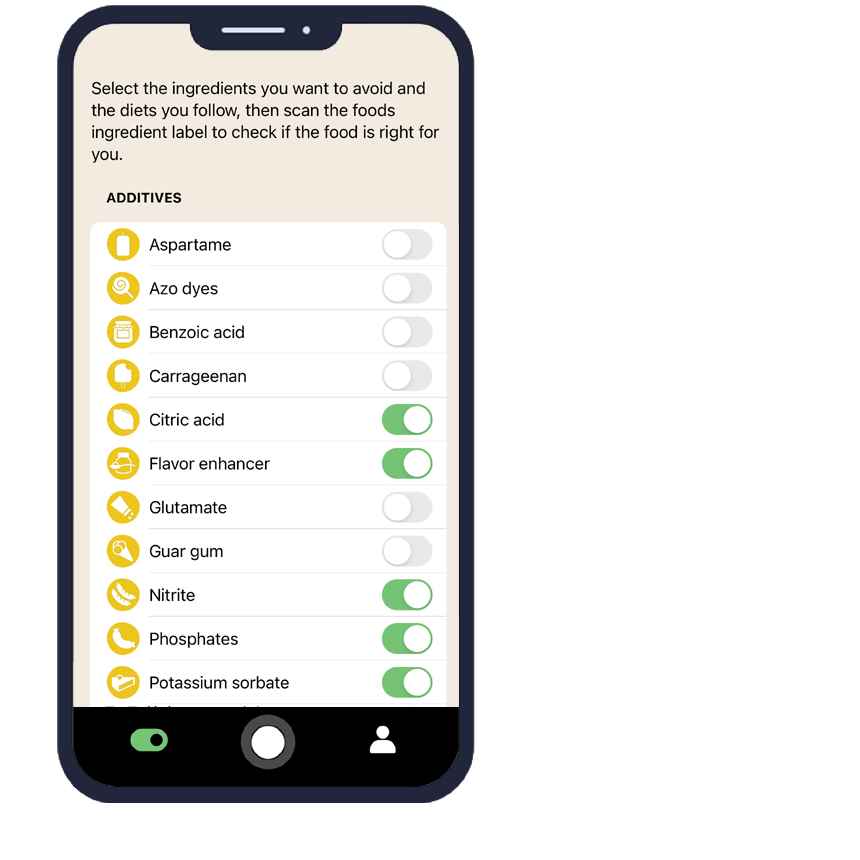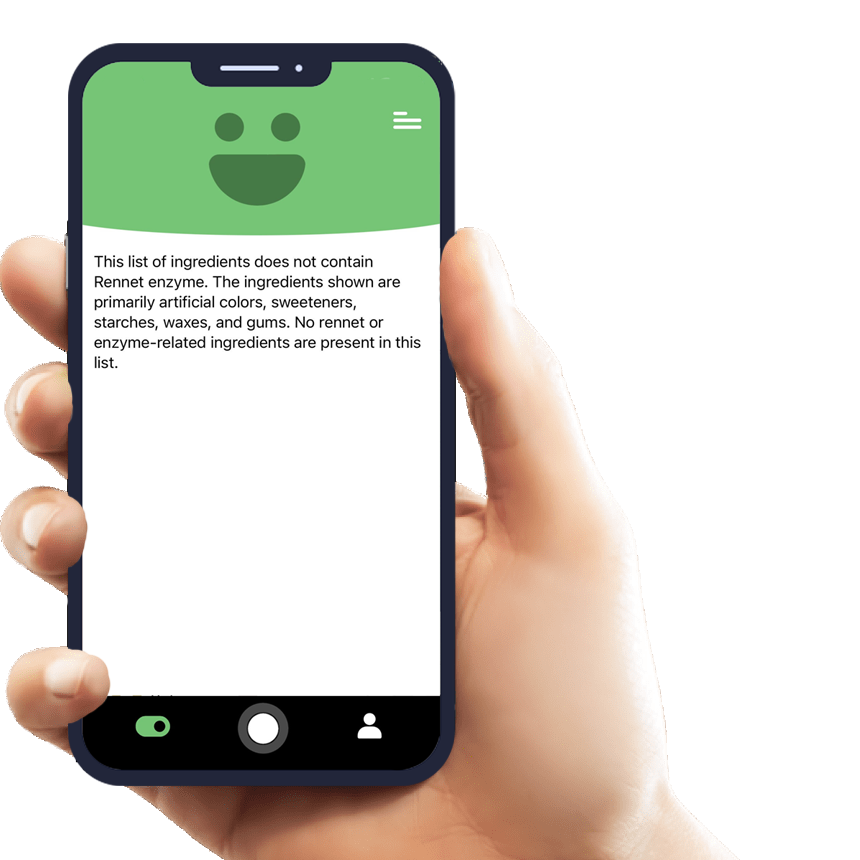Everything You Need to Know About Titanium dioxide and How AI Eat This Can Help
Titanium dioxide, also known as E171, is a widely used food additive that has sparked considerable debate in recent years. This white pigment is commonly found in processed foods, candies, and beverages to enhance their appearance and color. For consumers with dietary restrictions or health concerns about food additives, identifying Titanium dioxide in products can be challenging.
The AI Eat This mobile app revolutionizes how people manage their dietary needs by instantly scanning ingredient lists and identifying potentially problematic additives like Titanium dioxide. Whether you're avoiding this additive for health reasons or following specific dietary restrictions, this innovative tool makes food shopping safer and more informed.
What Is Titanium dioxide and Where Is It Used?
Titanium dioxide is a naturally occurring mineral that appears as a bright white powder. In the food industry, it serves primarily as a whitening agent and opacity enhancer, giving products their appealing bright white appearance. This food additive is identified by the E-number E171 on European labels and appears under various names on ingredient lists worldwide.
The additive works by reflecting light, which creates the characteristic white color consumers expect in certain products. Its effectiveness as a pigment has made it a staple ingredient across numerous food categories, despite growing concerns about its safety profile.
Common Foods Containing Titanium dioxide
Titanium dioxide appears in a surprising variety of everyday food products. Understanding where this additive commonly appears helps consumers make more informed choices about their dietary intake.
- Chewing gum and breath mints
- White chocolate and candy coatings
- Cake decorating products and frosting
- Coffee creamers and powdered milk products
- Salad dressings and mayonnaise
- Processed cheese and dairy alternatives
- Vitamins and dietary supplements
- Baked goods and pastries with white icing
Is Titanium dioxide Safe? What Does the Research Say?
The safety of Titanium dioxide has become a contentious topic among health authorities worldwide. While some regulatory bodies maintain its safety for food use, others have taken precautionary measures based on emerging research concerns.
The U.S. Food and Drug Administration (FDA) currently allows Titanium dioxide in food products, considering it "generally recognized as safe" when used according to established guidelines. However, the European Food Safety Authority has taken a more cautious approach in recent years.
Regulatory Approvals and Guidelines
In 2021, the European Union banned Titanium dioxide as a food additive following safety concerns raised by the European Food Safety Authority (EFSA). The EFSA concluded that they could not rule out genotoxicity concerns, particularly regarding nanoparticles of the substance.
The World Health Organization continues to evaluate emerging research on Titanium dioxide safety. Different countries have varying regulations, creating a complex landscape for consumers trying to understand the additive's safety profile.
Potential Health Concerns
Research has raised questions about Titanium dioxide's potential effects on gut health and immune system function. Some studies suggest that nanoparticles of the substance might accumulate in body tissues, though the long-term implications remain unclear.
People with sensitive digestive systems or existing inflammatory conditions may choose to avoid Titanium dioxide as a precautionary measure. The additive's controversial status has led many health-conscious consumers to seek Titanium dioxide-free alternatives.
How AI Eat This Helps You Avoid Titanium dioxide
The AI Eat This app transforms the challenge of identifying Titanium dioxide into a simple, instant process. By leveraging advanced artificial intelligence technology, the app scans ingredient lists in any language and immediately flags products containing this controversial additive.
Users can set personalized dietary filters that automatically highlight Titanium dioxide and other unwanted ingredients. This feature is particularly valuable for people managing multiple dietary restrictions or those who want to avoid specific food additives without spending time deciphering complex ingredient lists.
The app's camera-based scanning technology works in real-time, making grocery shopping faster and more confident. Whether you're shopping for your family or managing specific health conditions, AI Eat This provides the information you need to make informed food choices instantly.
Who Should Consider Avoiding Titanium dioxide?
Several groups of people may benefit from avoiding Titanium dioxide in their diet. Individuals with inflammatory bowel conditions, such as Crohn's disease or ulcerative colitis, might choose to eliminate this additive as part of their dietary management strategy.
Parents concerned about their children's exposure to potentially controversial food additives often seek Titanium dioxide-free options. Children's developing systems may be more sensitive to various food additives, making parental vigilance particularly important.
People following clean eating principles or those with multiple chemical sensitivities frequently avoid Titanium dioxide along with other synthetic food additives. These dietary restrictions require careful label reading and product selection.
Tips for Maintaining a Titanium dioxide-Free Diet
Successfully avoiding Titanium dioxide requires a combination of knowledge, planning, and the right tools. Reading ingredient labels becomes second nature, but having technology assistance makes the process much more manageable.
Focus on whole, unprocessed foods whenever possible, as these naturally don't contain synthetic additives like Titanium dioxide. Fresh fruits, vegetables, lean proteins, and whole grains form the foundation of an additive-free diet.
When purchasing processed foods, look for products specifically labeled as "natural" or "organic," though always verify ingredients using reliable scanning tools. Many manufacturers now offer Titanium dioxide-free versions of popular products in response to consumer demand.
Utilize the National Institutes of Health resources to stay informed about current research on food additives. Staying educated about ingredients helps you make confident decisions about your dietary choices.
The Future of Food Additive Awareness
As consumer awareness about food additives continues to grow, more people are seeking tools to help them navigate complex ingredient lists. The controversy surrounding Titanium dioxide represents a broader trend toward questioning the safety and necessity of synthetic food additives.
Technology solutions like AI Eat This are becoming essential tools for health-conscious consumers. These apps democratize access to ingredient information, making it possible for anyone to make informed food choices regardless of their background knowledge about food science.
Conclusion
Understanding Titanium dioxide and its presence in food products is crucial for consumers who want to make informed dietary choices. While regulatory authorities continue to debate its safety, having the tools to identify and avoid this additive empowers individuals to follow their preferred dietary restrictions.
The AI Eat This app simplifies the complex task of ingredient identification, making it easier than ever to maintain a Titanium dioxide-free diet. By combining advanced technology with user-friendly design, the app supports various dietary needs and health goals.
Take control of your food choices today by downloading AI Eat This for free testing. Whether you're avoiding Titanium dioxide specifically or managing multiple dietary restrictions, this powerful tool puts ingredient transparency at your fingertips, making every shopping trip more confident and informed.

70 filters
With over 70 filters, you can easily avoid certain ingredients and follow your dietary preference.

Paleo

Pescetarian

Ultra-processed food

Vegan







































































